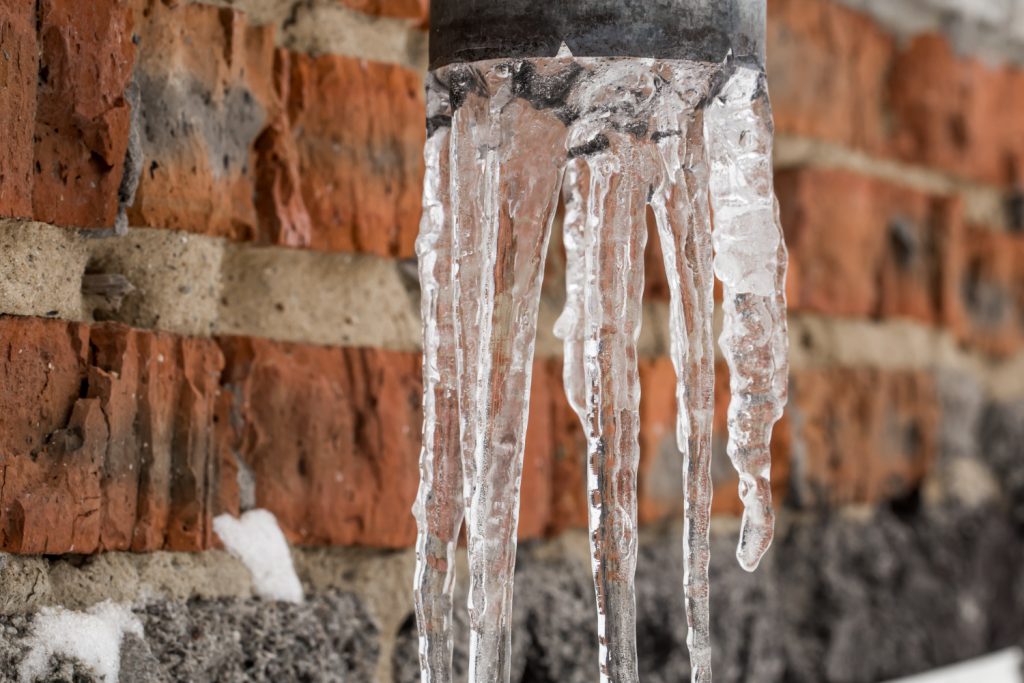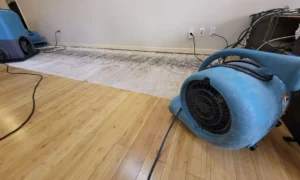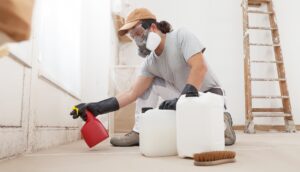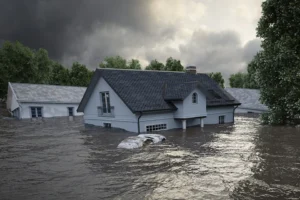Winter can be a tough season for your home. Cold weather brings many challenges, and one of the biggest issues is water damage. Snow, ice, and freezing temperatures can wreak havoc on your property. Cracked pipes, ice dams, and snowmelt can all lead to serious problems if not dealt with quickly.
Water damage during winter can cause extensive harm to your home’s structure. Moisture from leaks and floods can seep into walls, floors, and ceilings, leading to mold, mildew, and even structural damage. Quick action is essential to minimize the impact and cost of repairs. Knowing what to do immediately can save you from bigger headaches down the road.
Responding fast to winter water damage involves some specific steps. From spotting the signs of damage to taking immediate action and using the right tools, being prepared makes all the difference. Taking preventive measures to protect your home before winter hits can also help avoid these problems in the first place.
Understanding the causes of water damage in winter and knowing how to respond quickly can keep your home safe and sound. With some simple steps and the right preparation, you’ll be ready to handle any winter water damage issues that come your way.
Identifying Common Causes of Winter Water Damage
Winter weather can lead to various water damage problems. Knowing these causes helps you be prepared and act quickly. Here are some common causes:
1. Frozen Pipes: When temperatures drop below freezing, the water in your pipes can freeze. Frozen water expands, which can cause the pipes to crack or burst. This leads to leaks and significant water damage in your home.
2. Ice Dams: Ice dams form when the snow on your roof melts and refreezes at the edges. This blocks water from draining off the roof, causing it to seep under shingles and into your home. Ice dams can lead to leaks in your attic and other areas.
3. Melting Snow: Snow that melts too quickly can create excess water. If the ground is still frozen and can’t absorb the water, it can flow into your home’s foundation or basement. This standing water can cause floods and long-term damage.
4. Blocked Gutters: Leaves, snow, and ice can block your gutters during winter. When gutters are clogged, they can’t channel water away from your home. This backup can cause water to overflow and seep into walls and ceilings.
Immediate Actions to Take When You Discover Water Damage
Discovering water damage can be stressful. Acting quickly is key to minimizing damage. Here are steps to take immediately:
1. Turn Off Water Supply: If the water damage is from a burst pipe, turn off the main water supply to stop the flow. This prevents more water from entering your home and causing additional damage.
2. Remove Standing Water: Use a wet/dry vacuum, mop, or towels to remove standing water. Getting rid of water fast helps prevent further damage and reduces the chance of mold growth.
3. Protect Valuables: Move furniture, electronics, and other valuable items out of the wet area. This helps prevent damage to your belongings and makes the cleanup process easier.
4. Ventilate the Area: Open windows and use fans and dehumidifiers to dry out the affected area. Proper ventilation speeds up drying and helps prevent mold and mildew from forming.
5. Document the Damage: Take pictures and make notes of the damaged areas and items. This documentation is useful for insurance claims and helps ensure you get the coverage you need for repairs.
Acting promptly to address water damage can save you time, money, and effort in the long run. With these immediate steps, you can minimize the impact of water damage in your home.
Essential Tools and Supplies for Quick Water Damage Response
Having the right tools and supplies can make a big difference when dealing with water damage. Being prepared means you can act fast to minimize damage and start the drying process. Here are some key items you should have on hand:
1. Wet/Dry Vacuum: This versatile tool helps quickly remove standing water. They are powerful and designed specifically for handling wet messes without damaging the motor.
2. Dehumidifiers: These devices pull moisture out of the air, helping dry out damp areas. Use them in conjunction with fans to speed up the drying process and prevent mold growth.
3. Fans: High-powered fans help circulate air and dry out wet areas faster. Place them strategically to ensure proper airflow around the affected area.
4. Moisture Meters: These handy tools measure the moisture levels in walls, floors, and ceilings. They help you track the drying process and ensure everything is completely dry before you stop dehumidifying and airing out the space.
5. Protective Gear: Safety first! Gloves, rubber boots, and face masks protect you from any harmful contaminants that might be in floodwater. This gear also helps keep you safe from potential mold spores.
6. Absorbent Materials: Large quantities of towels, mops, and buckets will help with water removal and cleanup. Absorbent pads are also useful to quickly soak up water from carpets and furniture.
Long-Term Prevention Tips to Avoid Future Water Damage
Preventing water damage is always better than repairing it. Simple, proactive steps can help protect your home from winter water damage. Here are some key prevention tips:
1. Insulate Pipes: Wrap pipes in insulation to keep them from freezing. This is especially important for pipes in unheated areas like basements and attics. Use pipe sleeves or heat tape for extra protection.
2. Clean Gutters and Downspouts: Ensure gutters and downspouts are clear of debris so that water can flow freely. Regular cleaning prevents blockages that can lead to ice dams and overflows.
3. Check Roof and Attic Ventilation: Proper ventilation in your attic helps prevent ice dams by keeping the roof the same temperature as the eaves. Regularly inspect and repair any roof damage to prevent leaks.
4. Seal Cracks and Gaps: Inspect your home for any cracks or gaps where water could seep in. Use sealant to close up any spaces around windows, doors, and your home’s foundation to keep water out.
5. Install a Sump Pump: If you have a basement, installing a sump pump can help keep it dry. It automatically pumps out water that collects in a sump basin, preventing flooding.
Taking these proactive steps can save you a lot of trouble and expense down the road. Regular maintenance and inspections go a long way in keeping your home safe from water damage.
Conclusion
Winter water damage can be a serious threat to your home, but acting quickly and taking preventive measures can help you manage it effectively. From identifying the common causes to having the right tools and supplies, being prepared is key. Immediate actions to remove water and dry affected areas can prevent further damage and costly repairs. Plus, taking long-term steps to safeguard your home can prevent future water damage when cold weather strikes again.
By staying proactive and prepared, you can protect your home from the many challenges that winter brings. Don’t let water damage catch you off guard. Taking action now ensures your home remains safe, dry, and comfortable through the winter months.
For expert help with water damage restoration, contact Northwest Restoration in Mukilteo, WA. Our skilled team is ready to assist you with any property damage needs. Get in touch today to keep your home in top shape all year round.









